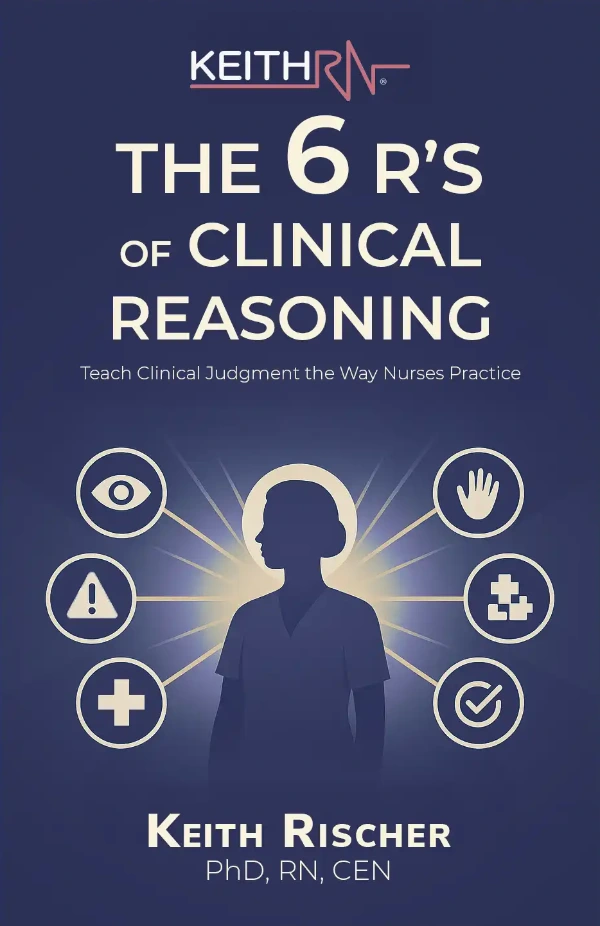
Preparing students for real-world clinical practice must begin at the very onset of the nursing program, and not something reserved for the advanced student or the capstone clinical experience. I had a recent experience in the clinical setting that highlighted why this is so important.
My Story
I was caring for an elderly female patient who was increasingly confused after having a stroke. The physician ordered a Foley catheter, and I prepared to place this with a second nurse present. Even though I had patiently explained to the patient what I was going to do, it did not register with her.
As I gently cleansed the peri area, she began to scream and fight and demand that I stop. But there was no going back. The catheter had to be inserted because she was also in early renal failure and needed to assess her urinary output closely.
As she continued to resist, I did my best to cleanse her peri area and thought I saw the urethral opening but was not where it was supposed to be anatomically and the catheter was misplaced and had to start all over.
Fortunately, on the second attempt and living on a prayer, urine was evident in the tubing, and the patient immediately began to settle and became much calmer now that her bladder was emptied.
This is the real world of clinical practice and students who are learning essential skills must be prepared not only for calm and cooperative patients for any skill that is required but also the worst possible or most likely challenges that will be experienced in the clinical setting!
Teaching Skills
What I taught fundamentals as a new nursing instructor, each skill was taught and then broken down step by step. Students were then expected to practice and check off on each skill taught that semester.
When teaching sterile technique with the application of inserting a Foley urinary catheter, students practiced on a lifeless mannequin that did not move and inserted the catheter in a very large urethral opening for a woman. You have to start here, but students also need to be given a heads up that clinical practice is not neat and controlled like the skills lab.
I use the metaphor of Jason, the serial killer from Friday the 13th movie series to illustrate the worst possible or most likely complication that a patient could develop and the importance of the need to rescue. In the same way, students need to be prepared for the worst possible patient or challenge that could be experienced as a nurse in practice when teaching all skills.
This means that not everything is going to go as expected and when a patient is confused, intoxicated, delirious or in withdrawal, anything is possible, and the nurse needs to be prepared for this reality to be prepared for practice!
Prepare Students for Practice
In order to transform nursing education, content must be contextualized to the clinical setting and real-world practice (Benner, Sutphen, Leonard, & Day, 2010). To make this practical consider incorporating the following strategies to help prepare your students for the curve balls of clinical practice!
- Contextualize all content and skills taught to the bedside that includes the THINKING and reasoning that the nurse uses in practice. For example, when teaching the skill of catheter insertion, create a simple scenario that includes a context to decide to insert a catheter such as a post-op patient who has a residual bladder volume of 600 mL and is unable to void.
- When teaching any skill begin with a scenario that is EXPECTED such as inserting a Foley catheter on a patient who is calm, cooperative and understands what you will be doing. This reflects a still and cooperative mannequin that students practice on and ultimately check off with.
- As a student becomes proficient, discuss the UNEXPECTED difficult or challenging situations you may experience when a patient is confused and begins to resist and become uncooperative. How will you respond when the patient begins to resist? How will you use the art of nursing and caring to help calm this patient? What if this is not enough, then what?
- Have students reflect and determine if they are utilizing best practice when addressing a challenging situation with a patient. Often times it is not clear cut what is the best approach may be though safety is always a given. That is why I had three additional staff help hold the patient so I could quickly and efficiently maintain still technique while inserting a catheter under difficult circumstances.
Pearls of Practice
 In addition to the THINKING that is required for practice, these are pearls of practice that I have learned over the years and continue to use when inserting a Foley catheter that can help your students be PROACTIVE and not REACTIVE as a nurse.
In addition to the THINKING that is required for practice, these are pearls of practice that I have learned over the years and continue to use when inserting a Foley catheter that can help your students be PROACTIVE and not REACTIVE as a nurse.
- When inserting a Foley catheter, always grab a second catheter in case you miss the first time so you save precious time and make it as efficient as possible when a patient is confused!
- If you place the catheter in the wrong opening on a woman, keep the misplaced catheter where it is so that you are sure to place it correctly in the right opening on the second attempt.
- When inserting a catheter in a woman, if they can tolerate it, lower the bed and place in reverse Trendelenburg so gravity works for you to make it easier to visualize the urethral opening.
In Closing
You can’t prepare students for every challenging situation and scenario they will experience in clinical practice, but you can better prepare students for practice by using the most common challenging scenarios they will likely experience as it relates to patient care.
Encourage your students to think out of the box. Like any skill, the practice of these challenging scenarios will help students successfully transition to real-world practice and be successful as a new nurse.
Preparing for practice begins in the first semester. Begin to do so today!
RELEVANT Past Blogs
Learn more! The following past blogs provide additional background on today’s topic!
- The First Step to Better Prepare Students for Practice
- Practical Pearls to Strengthen Students’ Nursing Assessment Skills
- What Nurse Educators Can Do to Improve Practice Readiness of Students
What do you think?
What have you done to integrate practice-based challenging scenarios to prepare students for practice?
Comment below and let the conversation begin!
References
Benner, P., Sutphen, M., Leonard, V., & Day, L. (2010). Educating nurses: A call for radical transformation. San Francisco, CA: Jossey-Bass.
Keith Rischer – PhD, RN, CEN
As a nurse with over 35 years of experience who remained in practice as an educator, I’ve witnessed the gap between how nursing is taught and how it is practiced, and I decided to do something about it! Read more…
The Ultimate Solution to Develop Clinical Judgment Skills
KeithRN’s Think Like a Nurse Membership
Access exclusive active learning resources for faculty and students, including KeithRN Case Studies, making it your go-to resource.




